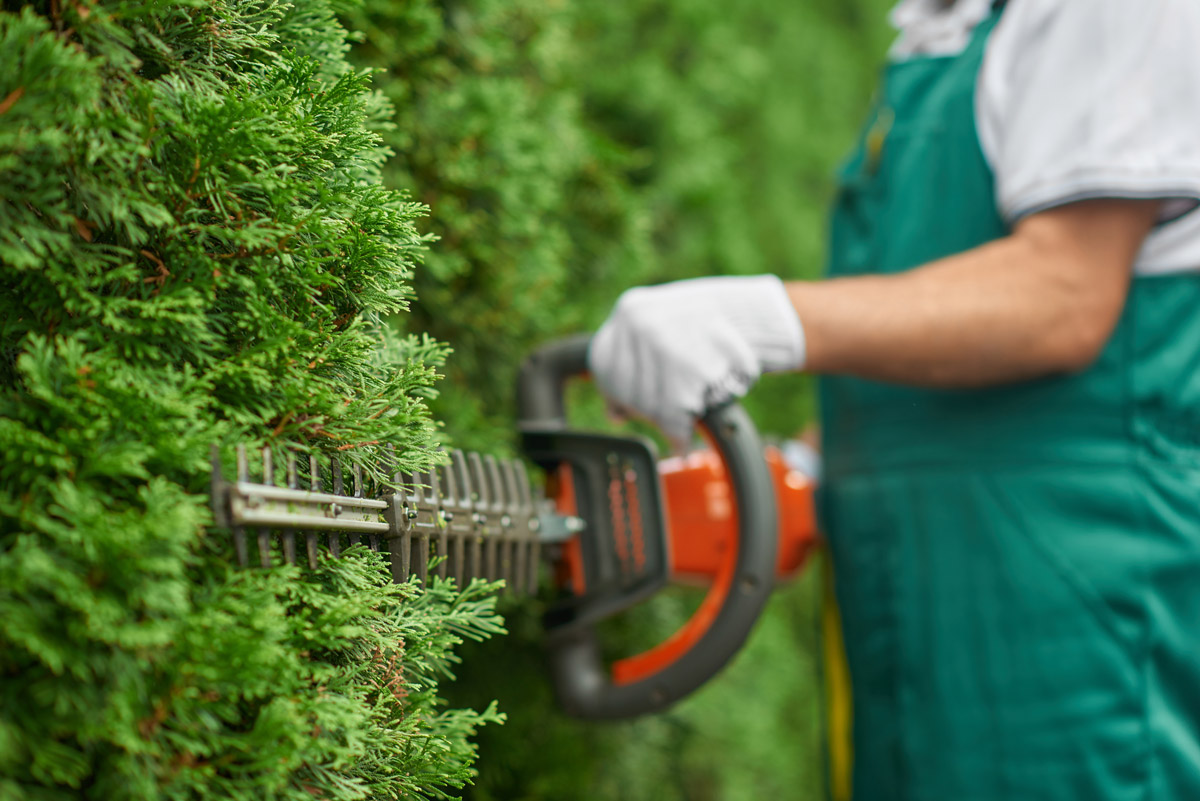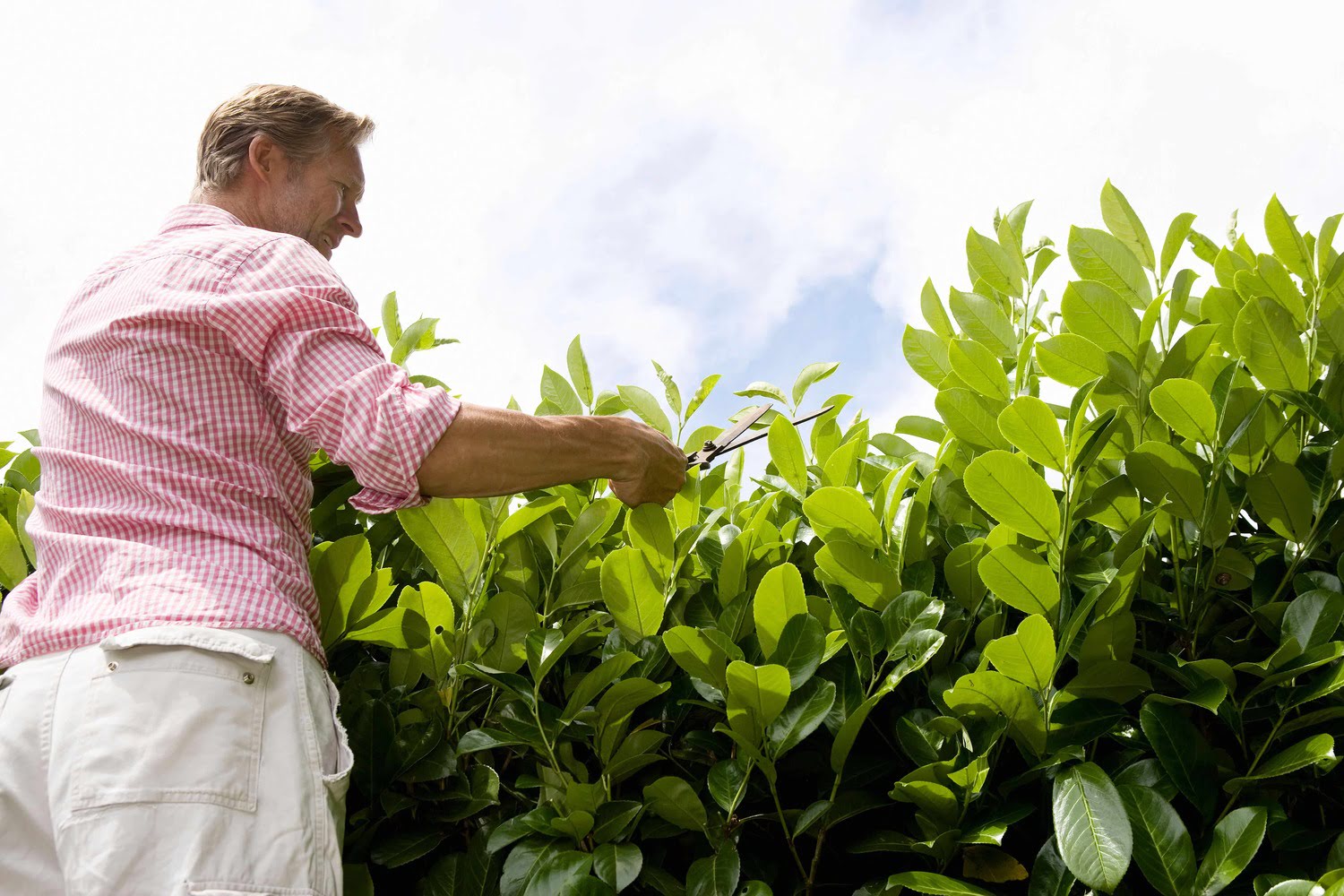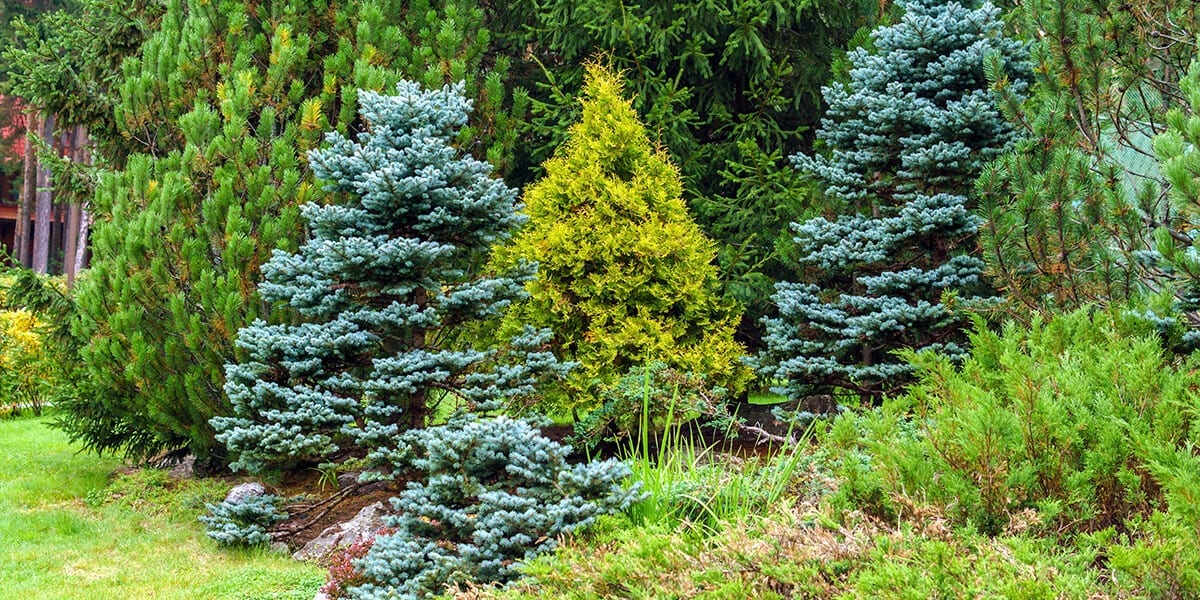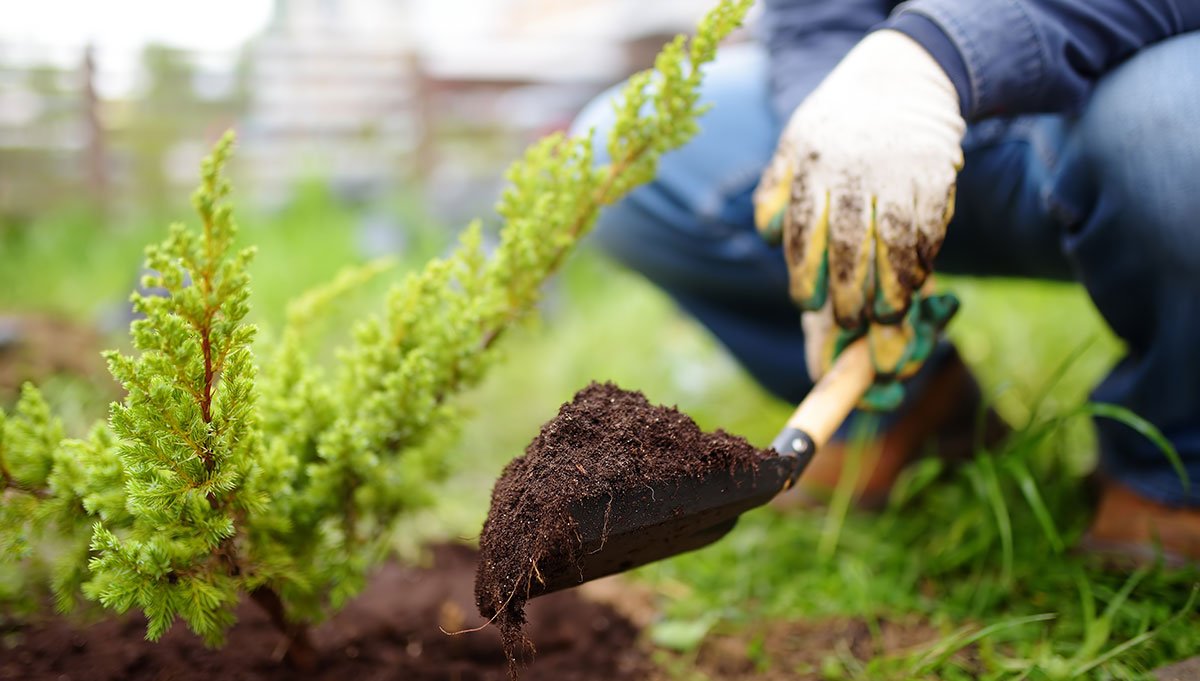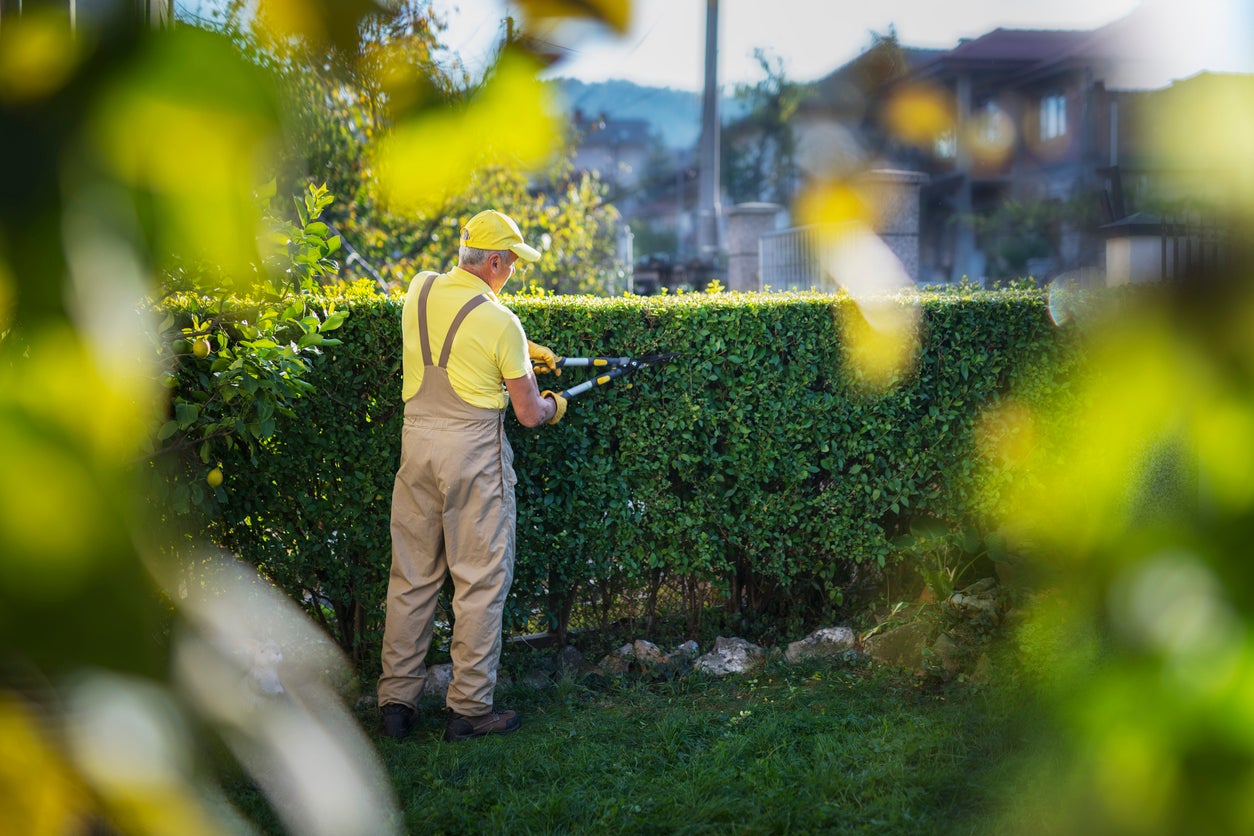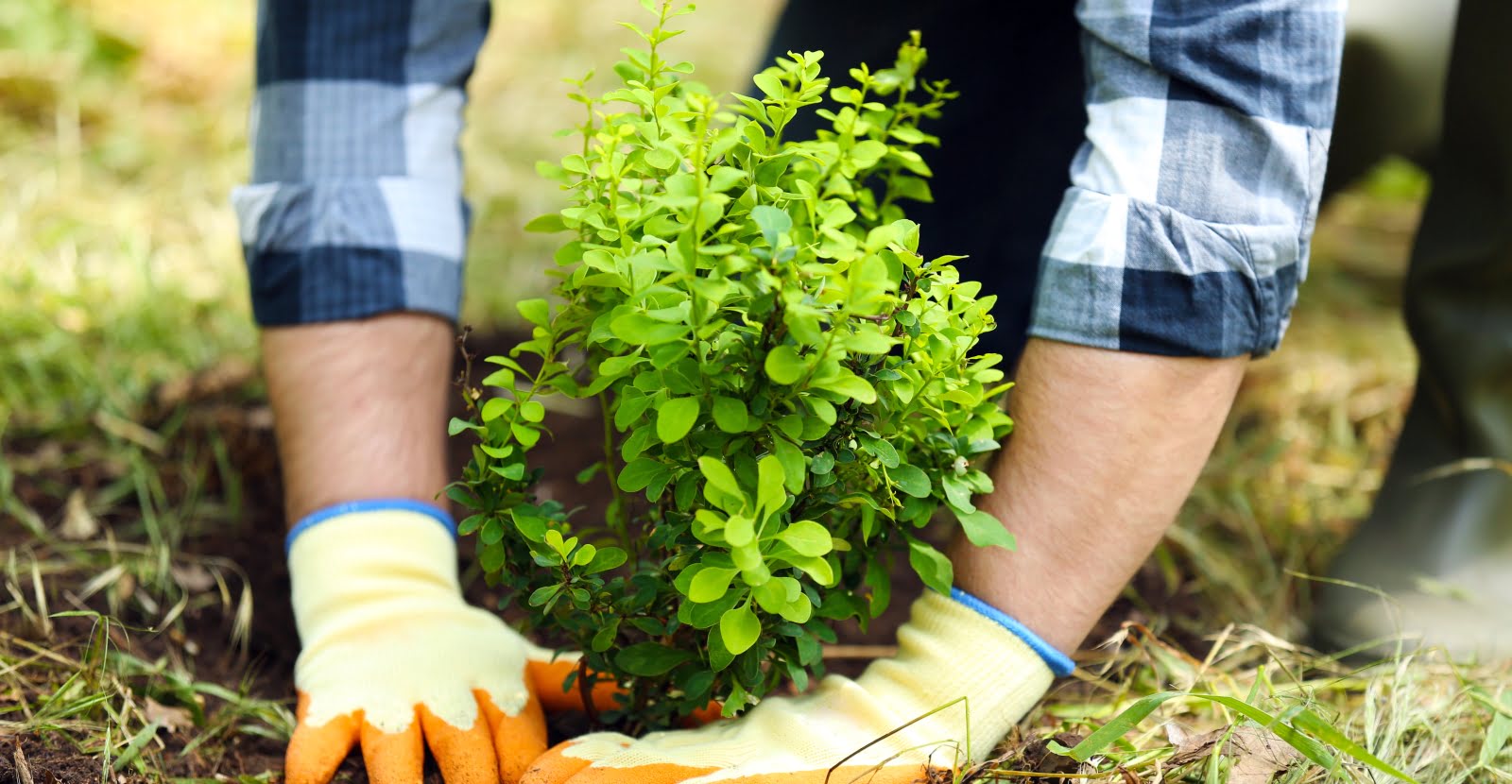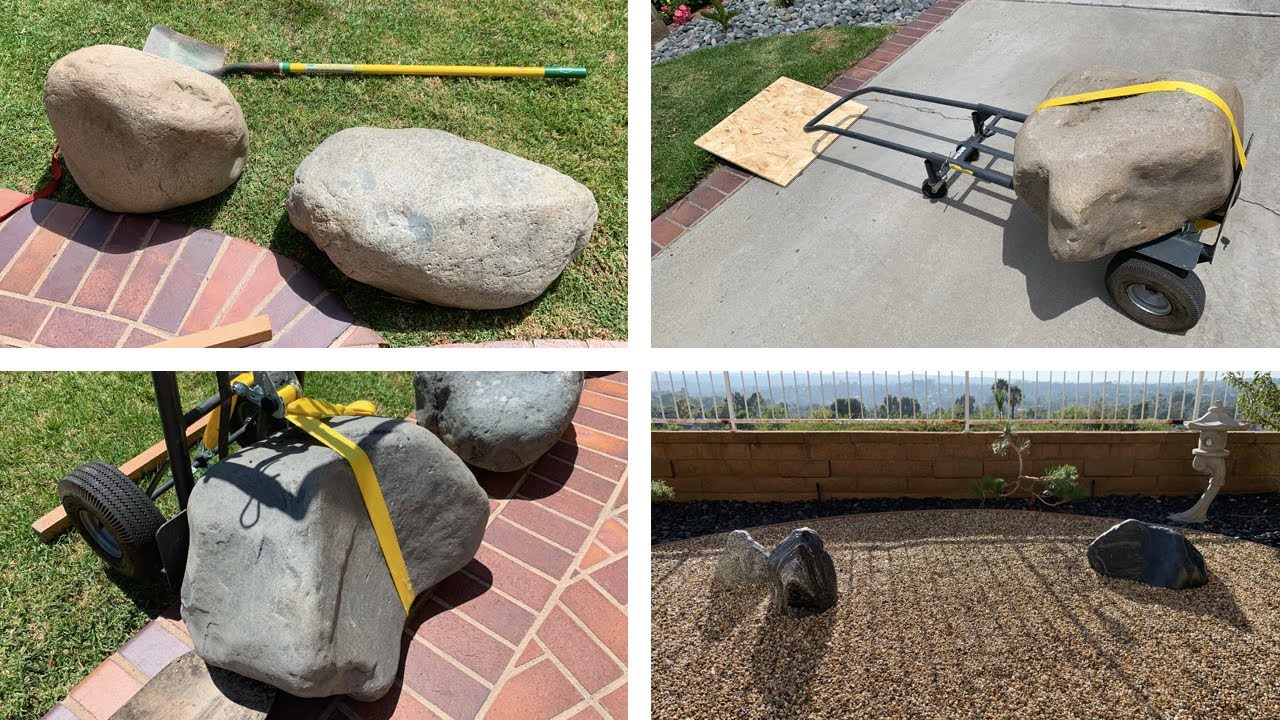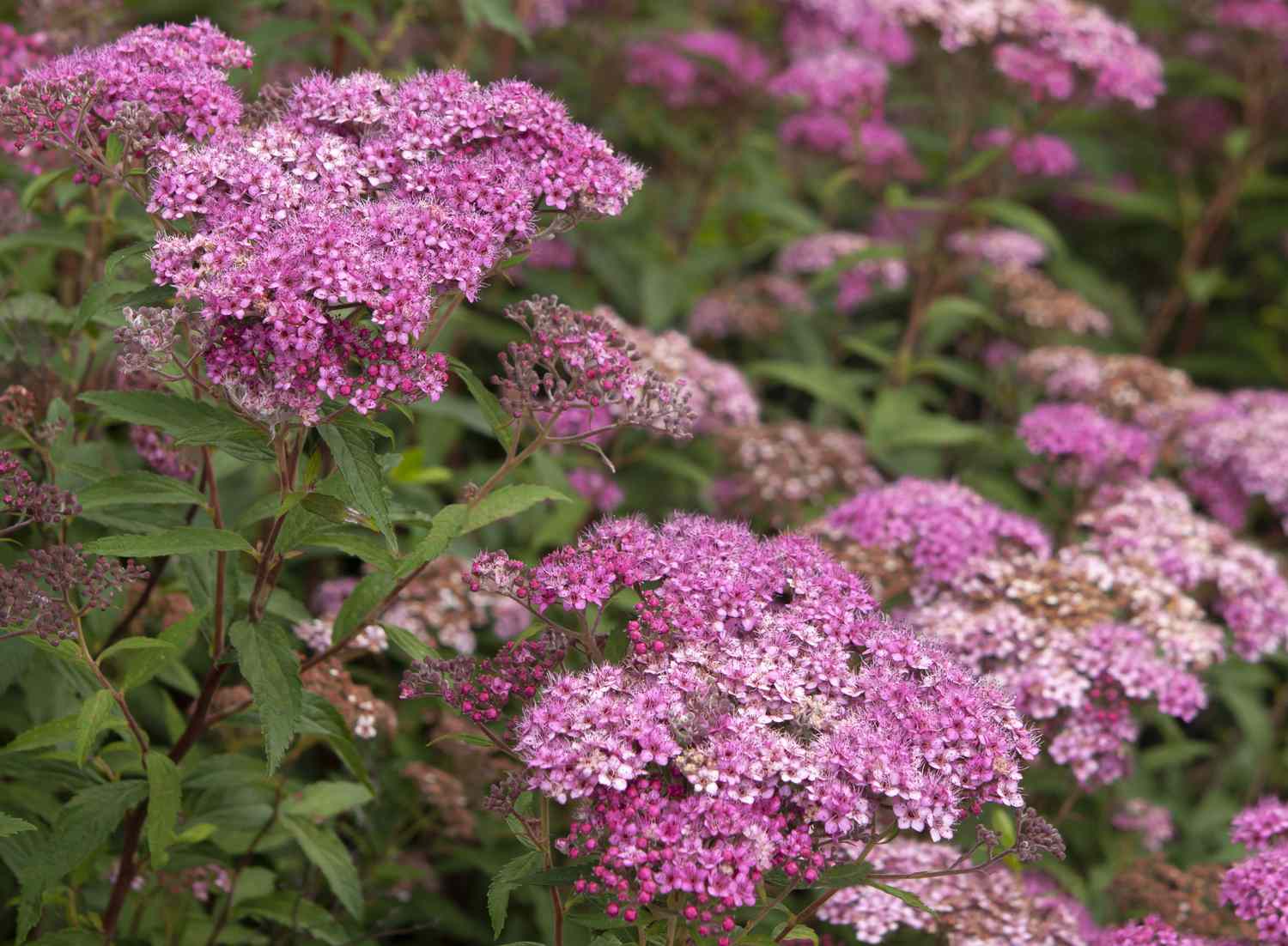Home>Gardening Techniques>Plant Care>When To Move Shrubs


Plant Care
When To Move Shrubs
Modified: January 22, 2024
Discover the best time to move shrubs and essential plant care tips. Learn when to transplant shrubs for optimal growth and health.
(Many of the links in this article redirect to a specific reviewed product. Your purchase of these products through affiliate links helps to generate commission for Chicagolandgardening.com, at no extra cost. Learn more)
Table of Contents
- Introduction
- Factors to Consider
- Climate and Weather Conditions
- Growth and Development of the Shrub
- Invasive or Disease-Prone Shrubs
- Limitations of Current Location
- Signs that Indicate it’s Time to Move Shrubs
- Best Time to Move Shrubs
- Steps to Successfully Transplant Shrubs
- Aftercare and Maintenance Tips
- Conclusion
Introduction
When it comes to plant care, ensuring that shrubs are in the right location is essential for their health and growth. However, there may be instances when you realize that a particular shrub needs to be moved for various reasons. Whether it’s due to incorrect placement, invasive growth, or unfavorable weather conditions, knowing when to move shrubs is crucial to their survival and long-term well-being.
Transplanting shrubs requires careful consideration and proper techniques to minimize stress and promote successful relocation. In this article, we will explore the factors to consider when deciding to move a shrub, the signs that indicate it’s time for relocation, the best time of year to transplant shrubs, and the steps to take to ensure a smooth and successful procedure. Additionally, we will provide aftercare tips to help the shrub settle into its new location and thrive.
By understanding the reasons for moving shrubs and implementing the appropriate steps, you can effectively maintain and enhance the beauty and health of your garden or landscape. So, let’s dive into the world of shrub transplantation and discover everything you need to know to make the right decisions for your plants.
Factors to Consider
Before deciding to move a shrub, it’s important to consider several factors that can impact the success of the transplantation. By carefully assessing these factors, you can make informed decisions and ensure the health and vitality of your shrubs. Here are some key considerations:
- Climate and Weather Conditions: Different shrubs have varying tolerances to climate and weather conditions. Consider the hardiness zone of your region and ensure that the new location provides suitable conditions for the shrub to thrive.
- Growth and Development of the Shrub: Take into account the size and growth habits of the shrub. Some shrubs may outgrow their current location or become overcrowded, requiring relocation to a more spacious area.
- Invasive or Disease-Prone Shrubs: If you have invasive shrubs that spread rapidly or shrubs that are prone to diseases, it may be necessary to move them to prevent the spread of pests or pathogens to other plants in your garden.
- Limitations of Current Location: Assess whether the current location is restricting the shrub’s growth and development. Factors such as lack of sunlight, poor soil quality, or competition from other plants can hinder the optimal growth of the shrub.
By taking these factors into consideration, you can determine whether it’s necessary to relocate the shrub and find a suitable new spot that meets its specific requirements. Transplanting a shrub can provide an opportunity for it to thrive in a more favorable environment and ensure its long-term health.
Climate and Weather Conditions
The climate and weather conditions of your region play a significant role in the success of transplanting shrubs. It is essential to understand the specific requirements of the shrub and ensure that the new location can provide a suitable climate for its growth.
One of the key considerations is the hardiness zone of your region. Different shrub species have different tolerances to cold or hot temperatures. Consult a hardiness zone map to determine the zone in which you reside. This will help you identify shrubs that are suitable for your climate and make informed decisions when choosing a new location.
Furthermore, consider the average temperatures and the extremes experienced throughout the year. If a shrub prefers cooler temperatures, but your region experiences scorching summers, it may struggle to thrive in its current location. Moving it to a spot with more shade or cooler microclimate can greatly improve its chances of survival.
In addition to temperature, consider the annual rainfall and humidity levels of your region. Some shrubs thrive in drier conditions, while others require consistently moist soil. Ensuring that the new location can provide the appropriate moisture levels for the shrub will promote its overall health.
The prevailing wind patterns in your area can also affect the shrub’s growth. Strong winds can damage delicate foliage or cause excessive water loss through evaporation. If your shrub is continuously exposed to strong winds, it may be necessary to move it to a more sheltered area.
Lastly, consider the overall climate trends and any potential changes in weather patterns. If your region is experiencing a shift in climate, moving the shrub to a location that better aligns with the new conditions can help ensure its long-term survival.
When considering climate and weather conditions, it’s important to research and understand the specific needs of the shrub species in question. By creating an environment that closely matches its natural habitat, you can increase the chances of successful transplantation and promote the health and growth of the shrub.
Growth and Development of the Shrub
Understanding the growth and development patterns of the shrub is crucial when considering its relocation. As shrubs mature, they may outgrow their current location or exhibit specific growth habits that require a more suitable space.
Consider the ultimate size of the shrub at maturity. Some shrubs can become quite large and may outgrow their allotted space in your garden. If you notice that the shrub is starting to encroach on other plants or structures, it might be time to move it to a more spacious location where it can fully develop without overcrowding.
Another factor to consider is the growth habit of the shrub. Some shrubs spread out horizontally, while others grow more vertically. If a shrub is sprawling and spreading too much, it can be rearranged to create a more attractive and efficient garden layout. On the other hand, if a shrub is growing too tall and appears disproportionate, it may benefit from being relocated to a spot where it can grow to its full potential.
Additionally, evaluate the root system of the shrub. Some shrubs have shallow root systems that can potentially cause damage to structures or disrupt nearby plants. By moving the shrub to an area with more suitable soil conditions and ample root space, you can prevent potential issues and support the healthy development of the shrub’s root system.
Observe the overall health and vigor of the shrub. If you notice signs of decline, such as yellowing leaves or stunted growth, it could be an indication that its current location is not providing the necessary resources for optimal development. Transplanting it to a more hospitable environment can potentially revive the shrub and promote its overall vitality.
When considering the growth and development of the shrub, it is essential to do proper research and understand the specific needs and characteristics of the species. This will ensure that the new location can accommodate the shrub’s growth requirements and provide an environment where it can thrive and reach its full potential.
Invasive or Disease-Prone Shrubs
When it comes to maintaining a healthy garden or landscape, it’s crucial to be mindful of invasive or disease-prone shrubs. These shrubs have the potential to spread rapidly or become susceptible to various pests and diseases, posing a threat to other plants in the vicinity.
If you have identified an invasive shrub in your garden or one that has a tendency to take over nearby areas, it is essential to take action to prevent its unchecked growth. Transplanting the shrub to a more controlled location can help contain its spread and minimize its negative impact on other plant species.
Similarly, if you notice that your shrub is showing signs of disease or is highly susceptible to certain pests or pathogens, moving it to a different location can help prevent the spread of the issues. By isolating the shrub and providing suitable conditions for recovery, you can protect the health of other plants in your garden.
Before moving an invasive or disease-prone shrub, it’s important to research and understand the specific characteristics and risks associated with the species. Some invasive shrubs have extensive root systems that can lead to regrowth even after transplantation. In these cases, additional measures such as root barrier installation may be necessary to prevent them from spreading in their new location.
Consult with local plant experts, extension services, or horticulturists to identify potential invasive species in your area and the most appropriate methods for containment. They can provide valuable guidance on proper removal techniques, potential legal restrictions, and the selection of alternative plant species that are better suited for your garden.
By taking proactive measures to address invasive or disease-prone shrubs, you can maintain a healthy and diverse garden while minimizing the ecological impact on your local ecosystem.
Limitations of Current Location
Assessing the limitations of a shrub’s current location is a crucial step in determining whether it needs to be moved. Various factors can restrict the growth and vitality of a shrub, necessitating a change in its surroundings.
One common limitation is the amount of sunlight the shrub receives. If the current location is shaded by buildings, trees, or other structures, the shrub may not be receiving adequate sunlight for photosynthesis and overall growth. Moving it to a sunnier spot can greatly enhance its health and vigor.
Soil quality is another important consideration. If the soil in the current location is poor in nutrients, drains poorly, or is otherwise unsuitable for the shrub’s specific needs, it may struggle to thrive. Transplanting the shrub to an area with fertile, well-draining soil can provide it with the necessary nutrients and conditions for robust growth.
Competition from other plants can also limit the shrub’s development. If it is surrounded by aggressive or fast-growing plants that are crowding out its space and competing for resources, moving the shrub to a more spacious location can give it the room it needs to flourish.
In some cases, the current location may present physical obstructions or hazards that can impede the shrub’s growth. It could be in the way of foot traffic, obstructing sightlines, or in danger of being damaged by construction or maintenance activities. Moving the shrub to a safer, more accessible spot can help ensure its long-term well-being.
Additionally, consider any noise, pollution, or other environmental factors that may be present in the current location. These can negatively impact the shrub’s health and overall enjoyment of the space. Moving it to a quieter, cleaner area can contribute to its overall well-being.
By assessing and addressing the limitations of a shrub’s current location, you can provide it with the best possible conditions for growth and ensure its long-term health and vitality.
Signs that Indicate it’s Time to Move Shrubs
Recognizing the signs that indicate a shrub needs to be moved is crucial for its continued health and growth. While each shrub is unique, there are common signs and indicators that can help you determine when it’s time to relocate. Here are some key signs to watch for:
Stunted Growth: If a shrub is not growing as expected or its growth has slowed down significantly, it may be an indication that it’s not thriving in its current location. Moving it to a more suitable spot can provide the necessary conditions for healthy growth.
Crowded Space: If a shrub is becoming overcrowded due to the growth of surrounding plants, it may be time to move it to a more spacious area. Crowding can lead to limited access to sunlight, nutrients, and water, preventing the shrub from reaching its full potential.
Poor Flower or Fruit Production: If a flowering shrub is not producing as many blooms as it once did, or a fruit-bearing shrub has a low yield, it may be a sign of environmental limitations in its current location. Transplanting the shrub to a more suitable environment can improve its flower or fruit production.
Root Issues: If you notice root issues such as girdling roots, root rot, or other root-related problems, it’s a clear indication that the shrub’s current location is not providing the necessary conditions for healthy root development. Moving the shrub to a new location with optimal soil conditions can help alleviate these issues.
Pest or Disease Problems: If a shrub consistently faces pest infestations or diseases, despite efforts to control them, it may be beneficial to move the shrub to interrupt the life cycle of pests or prevent the spread of diseases to other nearby plants.
Unfavorable Environmental Conditions: Extreme weather conditions such as excessive heat, cold, or strong winds can negatively impact a shrub’s growth and health. If the current location exposes the shrub to such conditions, it may be time to relocate it to a more sheltered spot.
Limited Sunlight: Shaded areas or locations with insufficient sunlight can inhibit a shrub’s ability to photosynthesize and thrive. If you notice that the shrub is not receiving enough direct sunlight, it may need to be moved to a sunnier location.
Physical Obstructions: If the shrub is obstructing pathways, views, or interfering with structures, it may be necessary to relocate it to a more suitable spot where it can grow without causing inconvenience or damage.
By paying attention to these signs, you can determine when it’s time to move a shrub and create a more favorable environment for its growth and well-being.
Best Time to Move Shrubs
Choosing the right time to move shrubs is crucial for their successful transplantation and subsequent establishment in their new location. The timing plays a significant role in minimizing stress and allowing the shrub to adapt to its new surroundings. While the ideal time can vary depending on the specific shrub species and climate, there are general guidelines to follow.
The best time to move deciduous shrubs, which lose their leaves in the winter, is during their dormant season. This typically occurs in late fall after the leaves have dropped or early spring before new growth begins. Transplanting during dormancy allows the shrub to focus its energy on root establishment rather than leaf production, reducing the risk of transplant shock.
For evergreen shrubs, which retain their foliage year-round, it’s generally recommended to move them in early spring or early fall. These periods provide mild temperatures and ample time for the shrub to acclimate before the extreme conditions of summer or winter. Avoid transplanting evergreen shrubs during the hot summer months, as increased water demands and heat stress can hinder their chances of survival.
In regions with harsh winters or extremely hot summers, it’s best to avoid transplanting shrubs during these extreme seasons. Instead, aim for the mild periods of spring or fall when temperatures are more moderate, and the ground is not frozen or excessively dry.
It’s important to note that regardless of the season, it’s vital to monitor the weather forecast before and after transplantation. Avoid moving shrubs during periods of extreme weather such as heavy rain, heatwaves, or frost. Transplanting during optimal weather conditions will help minimize stress on the shrub and promote its successful establishment.
When planning to move a shrub, it’s advisable to prepare the new planting hole prior to transplanting. This allows for a quicker transition of the shrub to its new location, minimizing the time it spends out of the ground and reducing stress.
Remember that proper aftercare, including watering, mulching, and monitoring for signs of stress, is essential after transplanting. These steps will assist the shrub in adjusting to its new surroundings and encourage healthy root establishment.
By understanding the best time to move shrubs and following the appropriate techniques for transplantation, you can give your shrubs the best chance at thriving in their new location.
Steps to Successfully Transplant Shrubs
Transplanting shrubs requires careful planning and execution to minimize stress and maximize the chances of successful establishment in their new location. Follow these essential steps to ensure a smooth and successful transplantation:
- Prepare the New Planting Hole: Prior to transplanting, prepare the new planting hole in the desired location. Dig a hole that is wider and slightly deeper than the shrub’s root ball. Loosen the soil and amend it with organic matter to improve drainage and fertility.
- Water the Shrub: Water the shrub thoroughly a day or two before transplanting. Moist soil will help reduce transplant shock and make it easier to remove the shrub from its current location.
- Prune the Shrub: Trim back any dead, damaged, or excessively long branches of the shrub. This will reduce stress on the plant during transplantation and promote a more balanced growth in its new location.
- Dig around the Root Ball: Carefully dig around the perimeter of the shrub, keeping a distance of at least 12 inches from the main stem. Dig deep enough to ensure that the majority of the root ball is intact.
- Lift and Remove the Shrub: Gently lift the shrub from the hole, taking care not to damage the roots. Use a tarp or burlap to support the root ball if necessary, especially for larger shrubs.
- Transfer the Shrub: Immediately transfer the shrub to the prepared planting hole in its new location. Place it at the same level as it was in its previous location, ensuring the root collar is level with or slightly above the soil surface.
- Backfill and Water: Backfill the planting hole with the amended soil, gently tamping it down to eliminate air pockets. Water the shrub thoroughly to settle the soil around the roots and provide hydration.
- Mulch and Stake (if necessary): Apply a layer of organic mulch around the base of the shrub, leaving a slight gap around the stem. Mulch helps retain moisture, suppress weeds, and insulate the roots. If the shrub is top-heavy or at risk of wind damage, secure it with stakes or supportive ties.
- Monitor and Provide Aftercare: Keep a close eye on the shrub and provide proper aftercare. Regularly water the shrub to keep the soil evenly moist, especially during the first year after transplantation. Monitor for signs of stress, pests, or diseases and take appropriate action if needed.
Adhering to these steps will help ensure the successful transplant of your shrubs and promote their thriving in their new location. Remember to be gentle and patient throughout the process, providing the necessary care and attention during and after transplantation.
Aftercare and Maintenance Tips
After transplanting shrubs to their new location, it’s important to provide proper aftercare and maintenance to help them adjust and thrive. Follow these tips to ensure the long-term health and success of your transplanted shrubs:
- Water Regularly: Proper watering is crucial during the establishment period after transplanting. Keep the soil consistently moist but not waterlogged. Water deeply and thoroughly, allowing the water to penetrate to the root zone.
- Apply Mulch: Apply a layer of organic mulch around the base of the shrub, avoiding direct contact with the stem. Mulch helps retain moisture, regulate soil temperature, suppress weeds, and enrich the soil as it breaks down over time.
- Monitor for Nutrient Needs: Check the health and vitality of the shrub regularly and assess if additional nutrients are required. If necessary, apply a balanced slow-release fertilizer according to the specific needs of the shrub species.
- Prune as Needed: Regular pruning is essential to promote healthy growth and maintain the desired shape of the shrub. Remove any dead, damaged, or diseased branches, and prune for size control or to encourage a bushier form.
- Protect from Extreme Conditions: Shield the shrub from extreme weather conditions such as strong winds, frost, or excessive heat. Install windbreaks, provide temporary shade, or use protective coverings to safeguard the shrub during vulnerable periods.
- Monitor for Pests and Diseases: Regularly inspect the shrub for signs of pests or diseases. Early identification and treatment can prevent further damage and ensure the overall health of the shrub. Use environmentally-friendly methods whenever possible.
- Provide Adequate Sunlight: Ensure that the shrub is receiving the appropriate amount of sunlight in its new location. Monitor the area for any changes in light conditions due to seasonal changes or the growth of surrounding plants.
- Proper Weed Management: Regularly remove weeds around the shrub to reduce competition for nutrients, water, and sunlight. Be careful when weeding to avoid damaging the shrub’s root system.
- Be Patient: Give the shrub ample time to adjust and establish itself in its new location. It may take several growing seasons for the shrub to fully acclimate and display its optimal growth.
- Stay Observant: Continuously monitor the shrub for any signs of stress, growth abnormalities, or changes in foliage appearance. Promptly address any issues to ensure the long-term health and well-being of the shrub.
By following these aftercare and maintenance tips, you can provide the necessary support and attention to help your transplanted shrubs thrive in their new location. Remember to be patient and attentive, as each shrub may have its own unique needs and requirements.
Conclusion
Transplanting shrubs may seem like a daunting task, but with careful planning, consideration of key factors, and proper techniques, you can successfully move shrubs to their new locations. By understanding the signs that indicate a shrub needs to be moved and the best time to undertake the transplantation, you can minimize stress and support the healthy establishment of the shrub in its new environment.
Factors such as climate, growth and development, invasive tendencies, and limitations of the current location should all be taken into account when deciding to move a shrub. These considerations will help ensure that the new location can provide the optimal conditions for the shrub to flourish.
When transplanting, be mindful of the steps involved. Prepare the new planting hole, handle the shrub with care, and provide proper aftercare and maintenance. Regular watering, pruning, monitoring for pests and diseases, and maintaining optimal growing conditions will aid in the successful establishment and growth of the transplanted shrub.
Remember that each shrub is unique, so it’s important to research its specific needs and requirements for transplantation. Consult with local experts and seek guidance when necessary to make informed decisions and ensure the long-term health and vitality of your shrubs.
By following these guidelines and incorporating proper care and attention, you can create a stunning and thriving landscape or garden filled with healthy, beautifully relocated shrubs.
